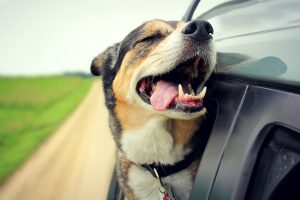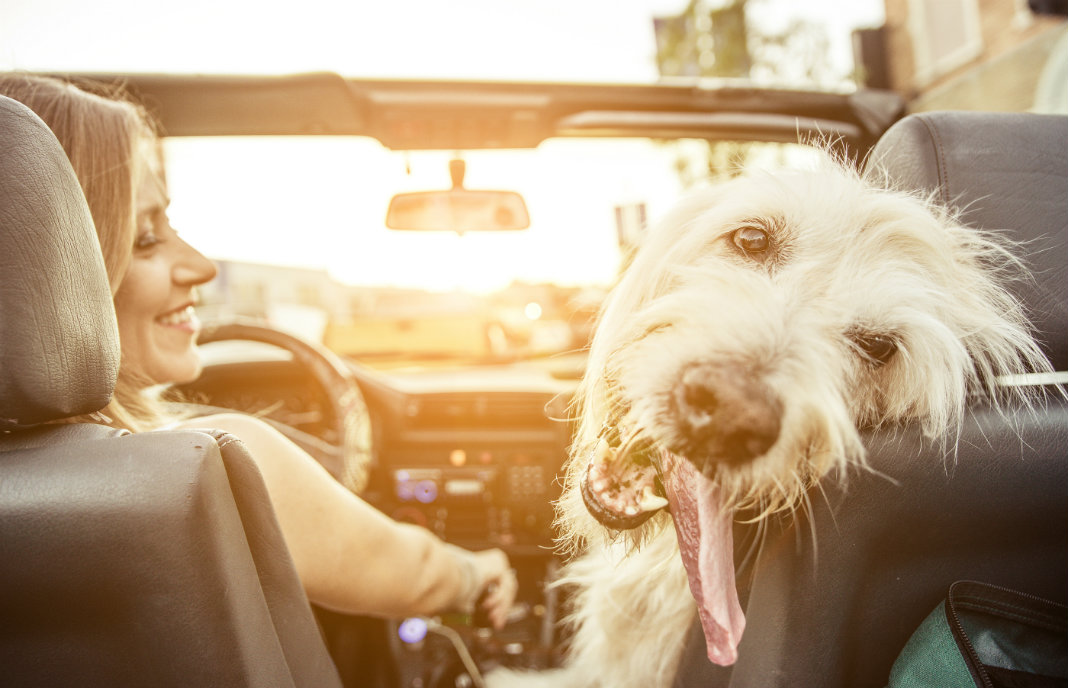It’s always fun to see people driving with their dogs – nose sticking out of the window, ears flapping around, or an attentive stare at the other cars passing by. However, not all dogs get the same kind of enjoyment out of being in a car. Motion sickness can be a problem; some find the experience anxiety inducing, while others associate car rides with going to the vet or other less fun experiences. Luckily you can teach your dogs to enjoy car rides, and do so in a safe manner.
Making a car ride fun for your dog is all about creating a positive experience. Make sure that you regularly take your dog places like the park, or a fun trail, or even a lake where they can swim. If you can associate a car ride with a fun activity, your dog will be excited to drive along with you. If your dog is only in the car for long trips where the destination, or the vet, they won’t enjoy car rides, and they’ll become anxious.
The best time to start training your dog for car rides is when they are puppies. Sit next to or have someone else sit next to your puppy on the first couple rides and comfort him or her, letting them know that they’ll be okay. As mentioned above, make sure that you are mixing your car rides with fun activities and not fun activities. Puppies go to the vet more frequently than when they are adults so it’s inevitable they’ll be on a few car rides that they won’t enjoy. By mixing car rides with fun and not fun activities, your dog will soon learn to associate car rides with pleasure.
It’s also important to remember that puppies are more prone to motion sickness than their adult counterparts. You can help your dog fight motion sickness by making sure they eat and drink less before they are set to go on a long car ride. Never feed your puppy immediately before driving, and if you have to feed them while in the car, make sure it is a snack with high protein or something they commonly eat. This requires some planning, but it will help your pup. As an extra precaution, bring towels and cleaning supplies in case your puppy has an accident. You can tell if your puppy is about to vomit if they start drooling heavily. Pull over if you can and get your puppy out, or at the very least, open a window, so they have access to fresh air.
As your dog gets older, you want to make sure they have good car riding habits. You do not want your dog moving around your vehicle because this is a distraction to you, which is dangerous. Ideally, your dog should either be in the back, on the floor, or in a seat where they know not to move. Praise your dog for staying in his or her place, give them treats after they’ve behaved well, and reinforce good behavior. It’s important to remember that smaller dogs should not sit up front. Deployed airbags can be fatal. If your dog has to be up front, deactivate your airbags.

One safety tool you can utilize is a dog seatbelt. It is an attachment that connects your dog’s collar to the seatbelt. You buckle the seat belt with your dog sitting in front of it, and it restricts your dog’s motion. There is also a harness option, which many prefer for comfort, increased stability, and safety.
Dog seat belts are usually best suited for adult dogs or dogs that don’t chew. Because puppies go through a chewing phase, they are more likely to gnaw at a seatbelt or anything connected to their collar. While you can prevent chewing from becoming a habit, this is not something you want to do while driving. Therefore, for your safety, and the safety of your pup, it’s recommended that you avoid using dog seat belts with puppies.
Driving your dog is very much like driving with a child. Make sure they are safe and secure, avoid letting them sit in the front seat, reinforce good car riding behavior, and try and associate car rides with fun activities.

